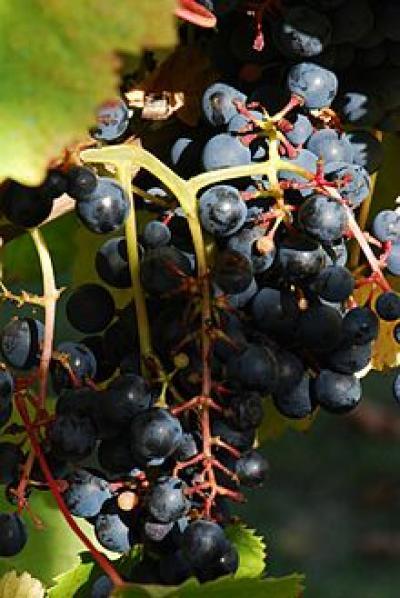ine making (and drinking) has long been more art than science, a subjective experience. But that is changing. In the future, you will be able to find a type of wine you like and have it consistently - all determined by science.
Unlocking the chemical processes that create a wine's aroma is the objective of scientists who recently sequenced the genome of the high-value Tannat grape, from which "the most healthy of red wines" are fermented.
Tannat is the "national grape" of Uruguay, South America's 4th-largest wine producer with 21,000 acres of vineyards. More than a third of the grapes grown are Tannat, from which the country's signature wines are produced.
Plantings of Tannat (also known in Uruguay as Harriague) have been increasing each year as that country's wine industry develops. Though a small player still, Uruguay is a rising star in the world's wine industry, exporting about 17% of its production (over 20 million litres valued at $15 million in 2012; a roughly 500% jump in the value of exports from 2004).
The main exports are Tannat or Tannat blends and vineyards in Uruguay have begun to distinguish between "old vines" -- descendants from the original cuttings brought over from Europe -- and new clones being produced today. The newer vines tend to produce more powerful wines with higher alcohol levels but less acidity, as well as more complex fruit characteristics.

Wines made from the Tannat are known as the most healthy of red wines due to their high levels of procyanidins, said to be good for reducing blood pressure, lowering cholesterol and encouraging healthy blood clotting. Credit: Wikipedia Creative Commons Attribution-Share Alike 3.0 Unported, 2.5 Generic, 2.0 Generic and 1.0 Generic license
The UN University's Venezuela-based BIOLAC programme, which in 2013 marks 25 years of advancing regional economic and health interests by building biotech science throughout Latin America and the Caribbean, workshops in Montevideo had Uruguayan chemistry professor Francisco Carrau and scientist Massimo Delledonne of Italy discuss their recent collaboration on sequencing the Tannat grape, pressings of which, thanks partly to its many seeds, produces the largest concentration of tannins -- an anti-oxidant that combats the aging of cells.
Wines made from the Tannat are known as the most healthy of red wines due to their high levels of procyanidins, said to be good for reducing blood pressure, lowering cholesterol and encouraging healthy blood clotting.
"A wine made with Tannat has twice the tannins of Cabernet Sauvignon, Merlot or Pinot Noir. Sequencing the grape's genome will allow vintners to protect a valuable niche in the world's $300 billion wine industry," says Prof. Carrau.
Now the same researchers are probing a secret of nature of potentially great commercial interest as well: how soil conditions, minerals, sun, temperature, climate, altitude and other environmental factors affect the expression of genes in grapes and the chemistry of wine's aromas and color.
"If we can determine through biotechnology the factors that determine a wine's aroma and color, we can potentially apply that information to create more pleasing and valuable products. Such information can also valuably guide decisions about where to plant new vines, which typically produce their first fruit after five years and their best fruit in about a decade. Having the ability to predict successful vineyard location holds enormous value.
"Discovering in more detail the health-promoting compound in the Tannat grape requires us to continue work on its genome. I suspect that in future, such information will help the variety become far better known around the world."






Comments